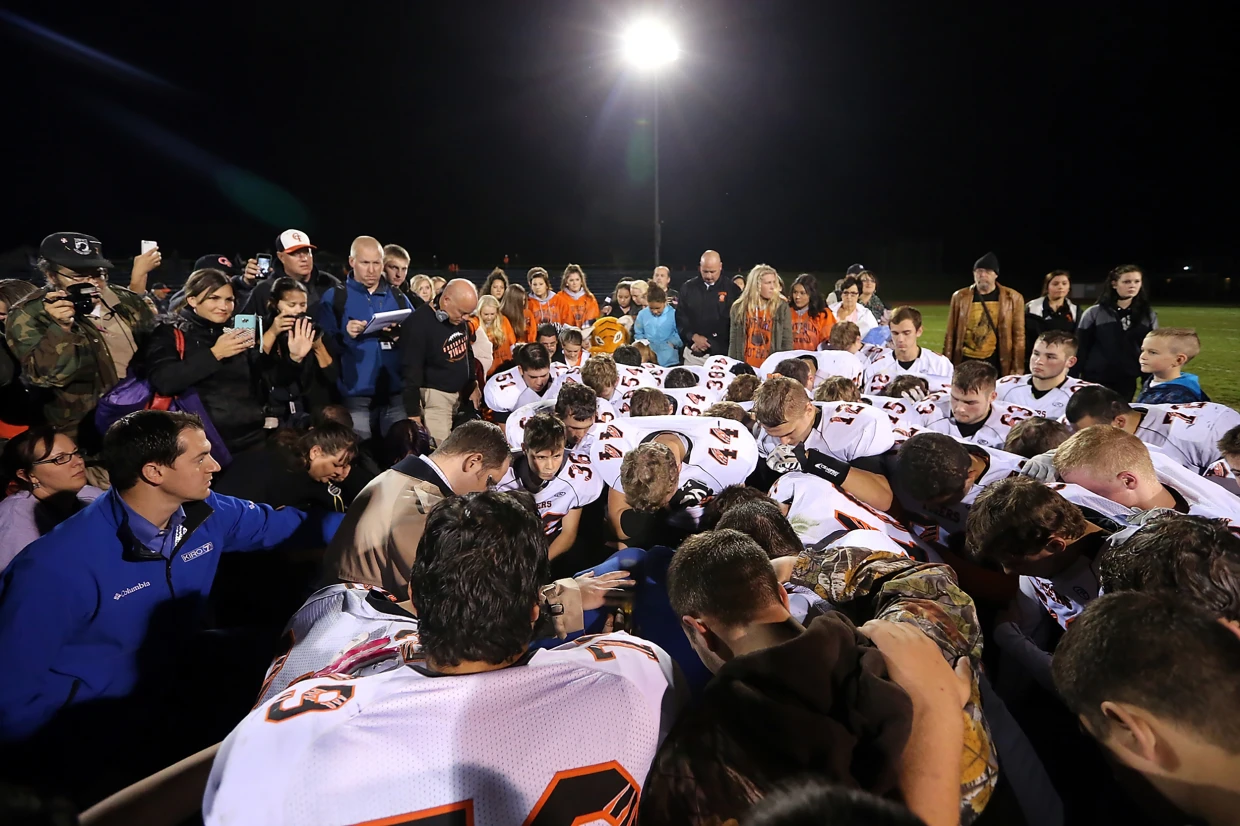August 29, 2011
Mihrab. Wudu. Minaret.
Those words have been foreign to me most of my life. I have been like most Americans, woefully ignorant about other religions besides my own. For that matter, until the last decade, I knew little even about my Jewish faith.
Recently, I shadowed a Wellesley Middle School sixth-grade class as the students learned about world religions. The purpose was research for my article about how one Boston-area school teaches about religion in The Boston Globe Sunday magazine. If I could headline a story within the story, it would be this: How One School Helps Reporter Fill in Knowledge Gap.
It is not enough to only know the workings of our own religion. It is not enough to just know what the inside of our own houses of worship look like. To understand each other better, we should break out of our comfort zones. In May, I went along as Wellesley took its sixth-graders to see a Wayland mosque, which operates more as a community center than a daily place of worship. Then, late last month, for further research, I tagged along as teens in a New Hampshire summer program toured the Islamic Society of Boston Cultural Center in Roxbury.
The Roxbury mosque visit educated me the most. Since prayer would occur during the tour, the females in the New Hampshire group and I draped our heads in scarves. It was a sticky summer day. I gained empathy and respect for Muslim women who choose to wear hijab every day and also for Orthodox Jewish women who follow similar rules about dress and keep their heads, arms, and legs covered. Religions, if we look deeply enough, often share more common than different threads.
On a tour of the mosque’s exterior, I gazed at the dome and the minaret – the tower. By then, I already knew that minarets traditionally have served a useful purpose; Muslims go to the towers to broadcast the call to prayer to worshippers. In predominantly Muslim countries, minarets are still used this way since most people living or working nearby are Muslim. At the Roxbury mosque, the minaret is symbolic. The call to prayer is broadcast, using a microphone, inside the mosque.
Inside the mosque, the guide pointed out the mihrab, the indent at the front of the prayer hall that points toward Mecca, the direction in which all Muslims must pray. Jews are supposed to pray in the direction of Jerusalem. As far as I know, Jews have no equivalent of a mihrab. Still, the idea of praying toward the most holy place for a religion was a shared concept.
On both mosque tours, I saw a wudu, the station where Muslims do ritual washing before prayer. Washing is part of ritual in many religions.
The most unfamiliar territory was the prayer hall. There were no seats and few embellishments. One man gave the call to prayer, and gradually, worshippers filed in. As is customary in Islam, men and women separate during prayer. How they separate depends on the mosque. At Roxbury, women pray where they are most comfortable. Some pray behind the men in separate rows, while others prefer to pray in a side area where they have more privacy. [Again, in this area, Islam and Orthodox Judaism are similar.]
Muslim worshippers stand so close to each other that their bodies touch – a symbolic gesture. “You’re supposed to stand touching firmly against each other, shoulder to shoulder, foot to foot. You’re supposed to keep your hearts together and not let Satan come between your hearts,” says Bilal Kaleem, president of the Muslim American Society of Boston, which runs the mosque.
It was a fascinating scene to watch. Few women were there on the day I visited. What I mostly saw were rows of males who ranged in age from perhaps 11 to 70 and varied in race and ethnicity. They stood, bowed, and prostrated themselves in unison as the prayer leader chanted in Arabic. It is not unusual for people of any faith to pray in unison, but I had never seen such physical closeness during prayer.
My own experiences are in Reform Jewish temples. In my temple, during the final song, congregants often put arms around each other and sway together as a community. During the rest of the service, we either sit or stand with our hands propping prayer books.
Is one way better than the other? Or odder? Of course not. Whether we are Jewish, Christian, Buddhist, Hindu or Muslim, our styles of worship are different. And, styles can vary depending on the particular temple or church or mosque. Each congregation has its own minhag – its own set of accepted traditions. And yet, as I learned on my visits to a pair of mosques, we do not have to look far to find similarities.





Pingback: The September Jewish Book Carnival | forwordsbooks
Thank you so much both for the words on your blog but also the link to your article. I have forwarded it to the sixth grade teacher at my school (Temple Israel of Hollywood) since she teaches about different religions. Very informative again thank you.
Linda, Once again, thank you for sharing your personal experience with your research, but more importantly for writing the story in the Globe. This is an important program they are doing in Wellesley, one every school district in this country should consider running. Perhaps they should all be sent your article to get them started.
A fascinating and unusual post – thank you for sharing this with the Jewish Book Carnival!
Thank you. It was an absolutely fascinating experience.
Enid and Kathy,
Thank you for your comments. My research shows that what’s happening nationally in schools is quite a mix, from teaching, to preaching, to doing nothing to add to students’ knowledge about the world’s religions.
Linda
Pingback: Visiting Mosques Teaches Countless Lessons | Tiferet Journal